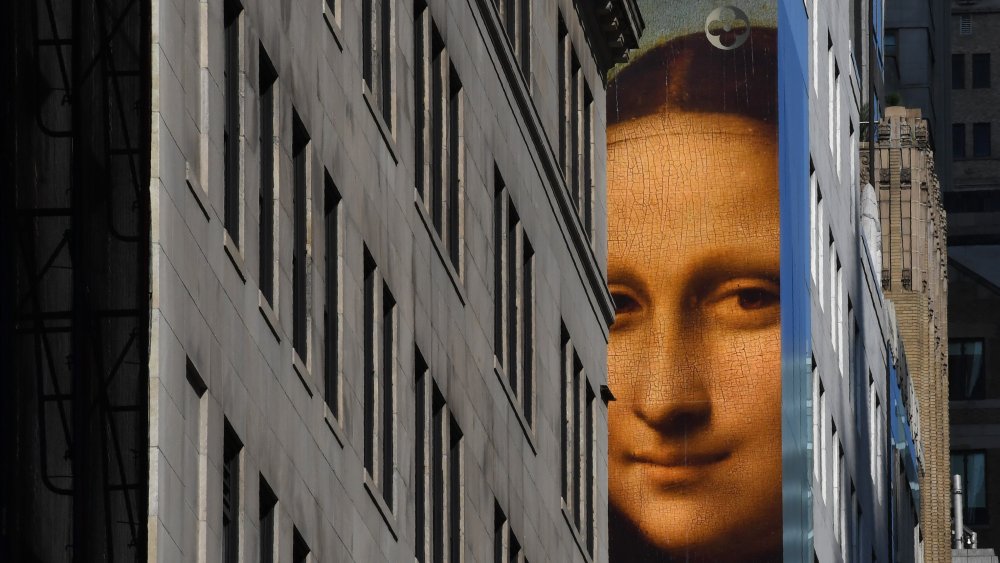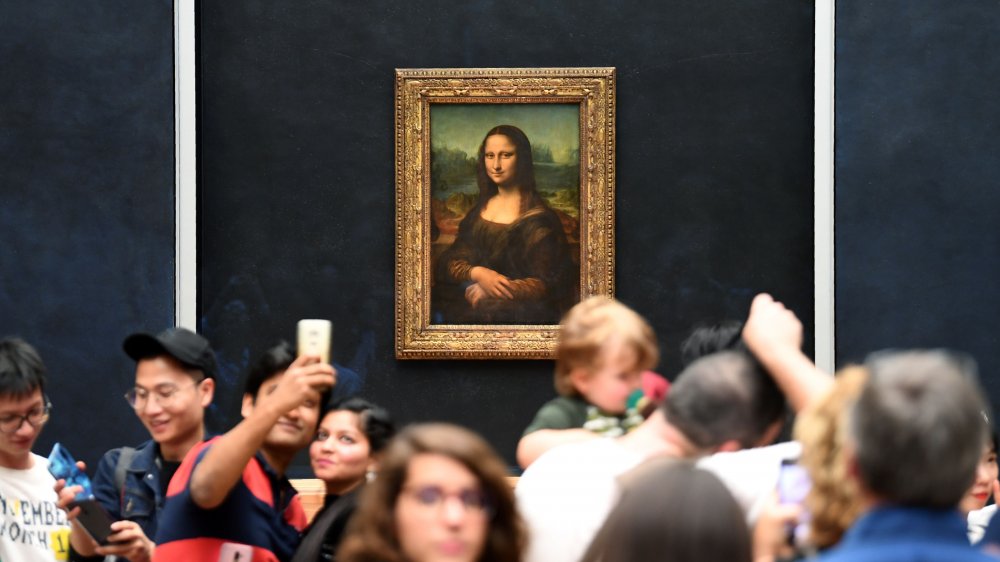The Real Reason The Mona Lisa Is So Valuable
If you've ever been to the Louvre, you no doubt remember the tingling anticipation as you approached the crowded room containing the Mona Lisa, or the sense of gravity you felt while elbowing your way through the mass of tourists to catch a glimpse of the universally admired masterwork. And then, unavoidably, you inched your way to the front of the group, gazed upon the 500 year old painting, and thought to yourself, "That's it?"
The Mona Lisa is perhaps the world's most recognizable piece of artwork. It's also, at 21 inches by 30 inches, about the same size as most office break room motivational posters. How did it become the most highly valued painting in the world when it started out as something King Francois I looked at while he pooped?
Mona Lisa smile for the camera
Aside from being one of the last great works by a man largely regarded as the greatest mind of his era, the Mona Lisa gets a lot of what's referred to in art circles as "street cred" from its long and sordid history. After a brief stint in Napoleon's bedroom, the painting became a fixture of the Louvre. Then, according to NPR, it started to pick up a reputation in the upper echelons of society as a masterpiece, gaining it an air of sophistication that made art thieves salivate. It was stolen in 1911, causing a media stir and snowballing the painting's notoriety.
As it became a mainstay of the public consciousness, its perceived value skyrocketed, and in 1962, it received an insurance valuation of $100 million, or roughly $840 million when adjusted for inflation. That means that, if they were so inclined and also decided to break their own laws on the subject of pawning off artwork considered to be public property, the French government could sell the painting, use the proceeds to buy a hundred million sets of beginner's acrylics, and maybe try painting something themselves for once instead of riding a dead Italian's coattails for the rest of their lives.

